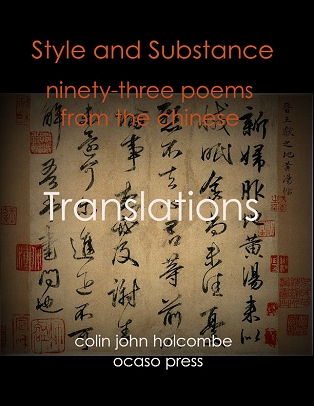Art presents itself as an autonomous, self-enclosing entity.
Immediately, before we have grasped its full nature, it seizes our attention.
We find it arresting and engrossing, but also separate from us.
Though we cannot master or possess it, art stirs us as other things cannot.
And not always by argument since there can be few arguments to follow.
Not wholly by truth, or accuracy of depiction, since we can be delighted by manifest
absurdities. Not by its potential applications, as art is not generally useful in
any direct way. By what then? The way it presents itself — by its coherence, balance,
shape, rightful order: what an earlier age called ‘beauty’ and we call aesthetic
qualities.
Kant observed that our response to art is disinterested. The aesthetic response
relies on a certain attitude, a detachment that Schopenhauer saw as loss of the individual
will or self, and which Edward Bullough called the detachment or ‘psychical distance’.
This ‘distance’ removes the practical side of things, erects as it were an invisible
frame round artistic expression, and makes aesthetic contemplation possible.
We suspend belief. We know from the picture frame, the stage, writing on the page that
these are not ‘real life’ but something where greater wholeness and clarity will provide
a more than compensating aesthetic pleasure.
It is also this characteristic that cautions against using the American free-verse model for Chinese
poetry translation: it lacks the necessary beauty of form and, being designed for a conversational delivery,
too much closes the aesthetic distance. The poems of imperial China scanned, rhymed and followed a multitude
of precise rules, the very things that free-verse ignores.

This aesthetic distance, detachment and autonomy is preeminently displayed by
Tang poetry, which, in the case of Wang Wei's poetry, often shows further distancing
effects as Wang explores the Buddhist aspects of human and spacial reality.
倦夜 JUAN YE
竹凉侵卧内 野月满庭隅
重露成涓滴 稀星乍有无
暗飞萤自照 水宿鸟相呼
万事干戈里 空悲清夜徂
A smell invades my room of cold bamboo.
Outside are fields, half courtyard that the moon
lights up. I watch the drops collect from the clear dew,
and stars, still faintly glimmering, that soon
go out. The fireflies also flit from view.
Odd birdcalls strike the water as though they’re strewn
with countless thoughts of war: they pass on through
to sorrows emptying in the night's clear tune.
The poem was written in a small house on the outskirts of Chengdu, to which Du Fu had
fled from the all-consuming An Lushan Rebellion. The moon is described as 野
(yě: field or outland), which I have transposed as ‘outside are fields’,
emphasizing the implied contrast between inside and outside,
with the latter invading the room in the cold smell of bamboo noted in the previous line.
The second couplet is again paralleling aspects of the scene.
The heavy dewdrops with the twinkling stars:
one forms as the others go out.
The last is given by 有无 (yồu wú: tangible, intangible) so that Du Fu is sayng a
little more than this.
The stars are tangible in the sense they can be seen,
but of course are far beyond means of grasping them.
That approach and then distancing, of being given and eluding us,
is repeated in the next couplet: the fireflies emit their light
(towards us) and the birds call to each other (i.e. away from us).
The final couplet is Du Fu’s tour de force, where the simple bird calls
seem threatening as though filled with thoughts of war,
which in turn are lost in the unfathomable sadness of life.
鹿柴 LU CHAI
空山不见人 但闻人语响.
返景入深林, 复照青苔上.
Emptiness. Mountains. No one unless
in these low voices overheard.
Sense falling into forest depths,
green in sun-cast mosses overhead.
The poem is commonly seen through Buddhist notions of impermanence and emptiness.
Interpretations have the first couplet seeing the world as it really is, and
the second with the light returning to purposefully illuminate the moss.
I tend to think Wang Wei is more concerned with shifting perspectives in this
much-translated piece. The rendering here respects the basic structure
(4 lines of five characters), the rhyme scheme, and the extended parallelism of the
original Chinese, but discloses these extra features:
Lines 3 and 4 repeat in reverse the meaning in lines 1 and 2: the world of the
senses is an illusion. 'Overhead' repeats in reverse 'overheard'.
Presence contrasts with non-presence: clear in the first line, blurred in the second,
more so in the third, and then sharply defined in the clear visual image of the
fourth — achieved by sound patterning (e.g. diphthongs in line 2, 'e' sounds in line 3).
Ying alternate with yang elements. Permanence of mountain rising from impermanence
(emptiness). That definite emptiness (no one) morphing into vague presence (voices).
Dissolving again (sense is lost in darkness) and then regrouped in a
definite image (suncast in mosses). Vertical movement (looking up at
mountain) pass to horizontal (voices heard followed by re-entering) and
thence back to vertical (overhead).
Rhyme in the original is abab, and abab in the translation.
Translation issues are explored in the free pdf ebook Background to the Chinese Translations.
For the poetry translations only click here.
For Notes on Poems 1 to 36 click here.
and for Notes on Poems 37-93 click here.
Artistic autonomy and others matters of aesthetics are discussed in the free pdf ebook Literary Theory.